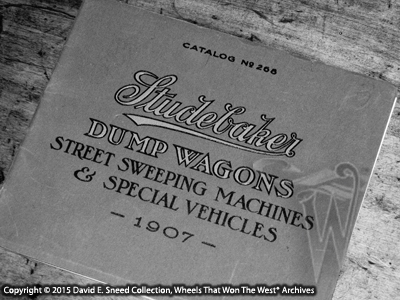Reporting the true depth of any business or industry can be difficult. The very nature of large corporations and their focus on commercial success can sometimes overshadow the human element inside. At the end of the day, though, it's always people that make the difference in any organization. People innovate, people excel, people challenge, and people stand in the gap.
Such was the case when, almost eleven decades ago as of this writing, the city of San Francisco was violently torn apart; thrust into the headlines as it reeled from the pulverizing power of a massive earthquake and fire. The first few hours of April 18,1906 were relatively quiet but just before dawn, the city and everyone inside were turned upside down. It's estimated that thousands of visitors and residents perished as the earthquake was joined by uncontrollable fires ravaging the remaining rubble.
While the city was almost totally shattered, the quake was not limited to the immediate area. It's tentacles of death and destruction also wreaked havoc throughout a good portion of the state. Below is an article published mere weeks after the April quake. As a tribute to the character of the American West and the people of our great nation, it seems appropriate to share this account. With so many heart-wrenching stories in the news these days, this May 1906 report in "The Carriage Monthly" is a reminder of the power of the human spirit and the resolve of the American people.
Charles Author Carlisle, of the Studebaker Bros. Mfg. Co., writing concerning the recent earthquake and fire in San Francisco, says:
"Immediately upon receipt of the news of the earthquake we sent our sales manager, L.F. Waver, who was previously our manager at San Francisco, to Sacramento, Cal., and we directed our field managers in the various sections of California to go at once to the city of San Francisco, and seek out our people there and do everything possible to relieve suffering and distress. It was several days before we got any definite information from our San Francisco manager, C. N. Weaver, and then the glad report came to us that he and his family and all members of our own force, which numbered considerable, were safe, although deprived of their homes and comforts of living. The distress locally, however, was intense, and our managers called for additional funds,asking us to send $5,000 in currency overland by special messenger, which we did, and succeeded in reaching them in time to be of continued service.
It is hard to adequately appreciate the distress and suffering of those who were inside of the city, but they were brave and generous to one another, even in their great distress -big-hearted and self-sacrificing, and this is one of the beautiful tributes to which the American people have so generously responded.
We have been inspired by the undaunted spirit of the Californian himself, and have laid plans for re-establishing ourselves in San Francisco and of co-operating in the desire and effort to rebuild the city. As stated above, temporary headquarters have already been established with our branch agency at Sacramento, where we will be able to look after our California trade and take care of the local business that will come to us."
Even though the article above was shared with the transportation industry over a century ago, the front-line report still feels fresh with sentiment. Perhaps it's because today's readers are so eerily familiar with natural disasters that this story is equally relatable today. Account after period account shows that the city's rebuilding process began immediately. Thousands upon thousands of horses, people, and wood-wheeled vehicles dug in, moving tons of rubble and replacing devastation with dreams. The city came back stronger and even more vibrant than before. It's an overwhelming reminder of the purest history of America; a melting pot of people, holding on to hope and repeatedly choosing to see opportunity over obstacles.
For some readers, this blog may seem to be a departure from the type of stories we've shared in the past. In reality, I think the topic may be among the most relevant we've ever posted. Why? Because it goes to the heart of what gives any brand lasting desirability. It highlights the point that the reputation of any business ultimately goes beyond the course of competition to the personality, care, and commitment of its people.
Thanks for stopping by. Remember, if you haven't signed up to receive this weekly blog via email, you can easily do so by clicking on the SIGN UP link in the upper right corner of our website. You'll receive a confirmation that verifies you're officially on board. We're looking forward to your visits each week.
Please Note: As with each of our blog writings, all imagery and text is copyrighted with All Rights Reserved. The material may not be broadcast, published, rewritten, or redistributed without prior written permission from David E. Sneed, Wheels That Won The West® Archives.
